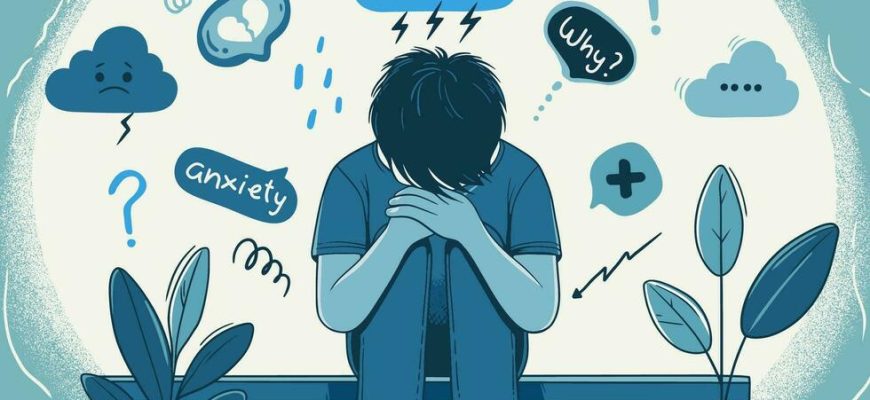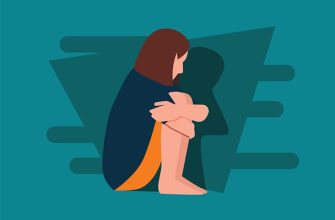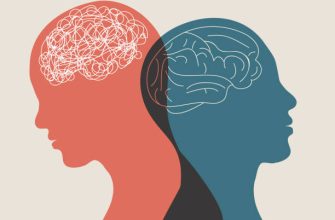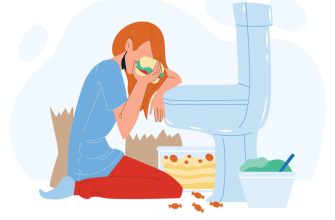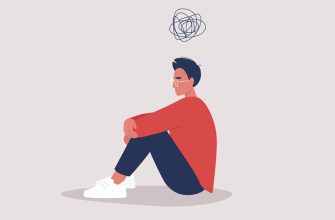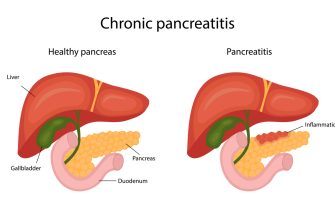Anxiety Disorders are a group of mental health conditions characterized by excessive fear, worry, or anxiety that interfere with daily functioning. Unlike normal feelings of nervousness or stress, anxiety disorders are persistent, often irrational, and can significantly impact a person’s quality of life. They are among the most common mental health conditions worldwide.
What is an Anxiety Disorder?
Anxiety disorders involve intense, excessive, and persistent worry or fear about everyday situations. These feelings are often disproportionate to the actual threat and can lead to avoidance behaviors, physical symptoms, and significant distress. Anxiety disorders can affect anyone, regardless of age, gender, or background.
Etiology (Causes)
The exact cause of anxiety disorders is unknown, but they are believed to result from a combination of genetic, biological, psychological, and environmental factors:
- Biological Factors:
- Neurochemical imbalances: Dysregulation of neurotransmitters such as serotonin, dopamine, and gamma-aminobutyric acid (GABA).
- Brain structure and function: Abnormalities in the amygdala (fear center) and prefrontal cortex (decision-making area).
- Genetic predisposition: Family history of anxiety or other mental health conditions.
- Psychological Factors:
- Personality traits, such as perfectionism or neuroticism.
- History of trauma, abuse, or neglect.
- Chronic stress or unresolved emotional conflicts.
- Environmental Factors:
- Stressful life events (e.g., divorce, job loss, or financial difficulties).
- Childhood adversity or overprotective parenting.
- Exposure to violence or unstable environments.
- Other Risk Factors:
- Chronic medical conditions (e.g., heart disease, diabetes).
- Substance abuse or withdrawal.
- Hormonal changes (e.g., during pregnancy or menopause).
Types of Anxiety Disorders
- Generalized Anxiety Disorder (GAD):
- Chronic, excessive worry about various aspects of life (e.g., work, health, relationships).
- Symptoms persist for at least six months.
- Panic Disorder:
- Recurrent panic attacks (sudden episodes of intense fear or discomfort).
- Fear of future attacks or avoidance of situations that may trigger them.
- Social Anxiety Disorder (Social Phobia):
- Intense fear of social situations or performance situations due to fear of embarrassment or judgment.
- Specific Phobias:
- Intense fear of specific objects or situations (e.g., heights, spiders, flying).
- Agoraphobia:
- Fear of situations where escape might be difficult or help unavailable (e.g., crowded places, public transportation).
- Separation Anxiety Disorder:
- Excessive fear or anxiety about separation from attachment figures (common in children but can occur in adults).
- Selective Mutism:
- Inability to speak in specific social situations despite speaking in other settings (common in children).
Symptoms
- Emotional Symptoms:
- Excessive worry or fear.
- Restlessness or irritability.
- Difficulty concentrating or mind going blank.
- Feelings of dread or impending doom.
- Physical Symptoms:
- Rapid heartbeat or palpitations.
- Sweating, trembling, or shaking.
- Shortness of breath or chest tightness.
- Nausea, dizziness, or lightheadedness.
- Muscle tension or headaches.
- Fatigue or sleep disturbances.
- Behavioral Symptoms:
- Avoidance of anxiety-provoking situations.
- Compulsive behaviors (e.g., checking, counting).
- Difficulty functioning in daily life.
Diagnosis
Diagnosis is based on clinical evaluation and specific criteria outlined in the Diagnostic and Statistical Manual of Mental Disorders (DSM-5):
- A thorough psychiatric assessment to identify symptoms and their impact on functioning.
- Medical history and physical exams to rule out other causes (e.g., thyroid disorders, heart conditions).
- Psychological questionnaires or scales to measure anxiety severity.
Treatment
- Psychotherapy:
- Cognitive Behavioral Therapy (CBT): The most effective treatment, focusing on identifying and changing negative thought patterns and behaviors.
- Exposure Therapy: Gradual exposure to feared situations to reduce avoidance behaviors.
- Acceptance and Commitment Therapy (ACT): Focuses on accepting anxiety and committing to value-based actions.
- Medication:
- Antidepressants: Selective serotonin reuptake inhibitors (SSRIs) or serotonin-norepinephrine reuptake inhibitors (SNRIs) are commonly prescribed.
- Benzodiazepines: Used for short-term relief of severe anxiety (e.g., alprazolam, clonazepam).
- Beta-blockers: Help manage physical symptoms of anxiety (e.g., propranolol).
- Lifestyle Changes:
- Regular exercise to reduce stress and improve mood.
- Mindfulness, meditation, or relaxation techniques.
- Healthy sleep habits and balanced nutrition.
- Avoiding caffeine, alcohol, and recreational drugs.
- Support Groups:
- Peer support can provide encouragement and reduce feelings of isolation.
Social Assistance
- Family and Friends:
- Educate themselves about anxiety disorders to provide understanding and nonjudgmental support.
- Encourage treatment and help create a calm, supportive environment.
- Support Groups:
- Organizations like the Anxiety and Depression Association of America (ADAA) or National Alliance on Mental Illness (NAMI) offer resources and peer support groups.
- Workplace Accommodations:
- Flexible schedules or remote work options.
- Open communication with employers about the condition.
- Online Resources:
- Websites, forums, and helplines provide information and support for individuals and families.
- Crisis Support:
- Access to crisis hotlines (e.g., 988 Suicide & Crisis Lifeline in the U.S.) for immediate help during severe anxiety episodes.
